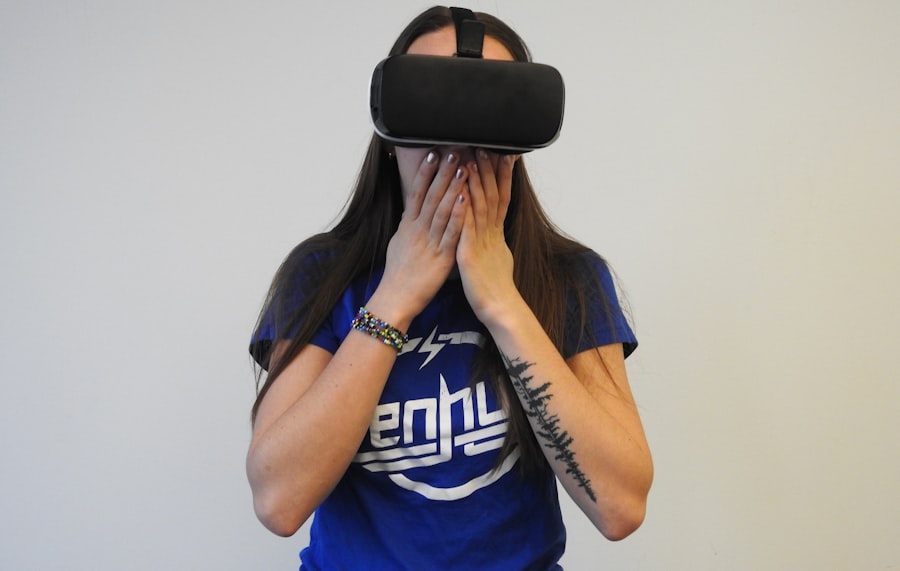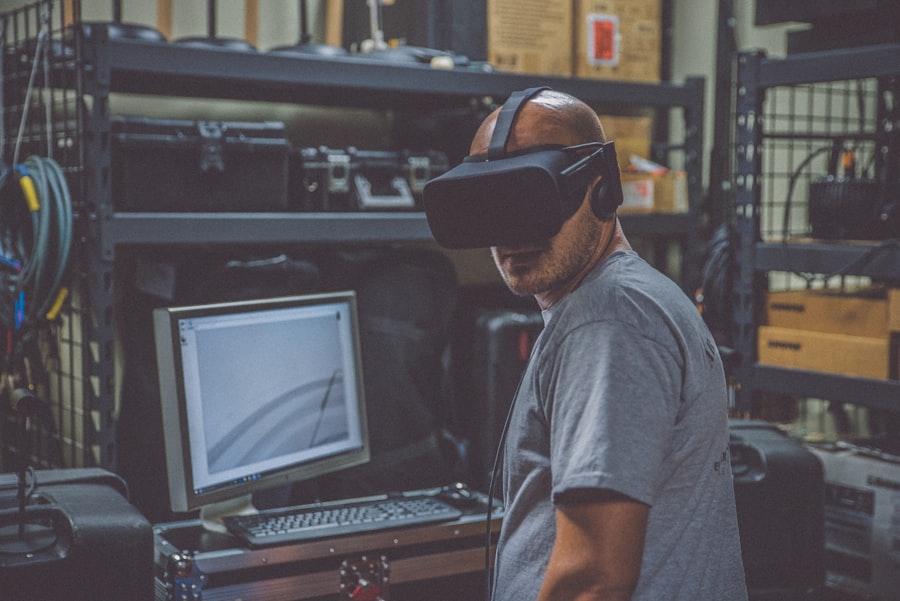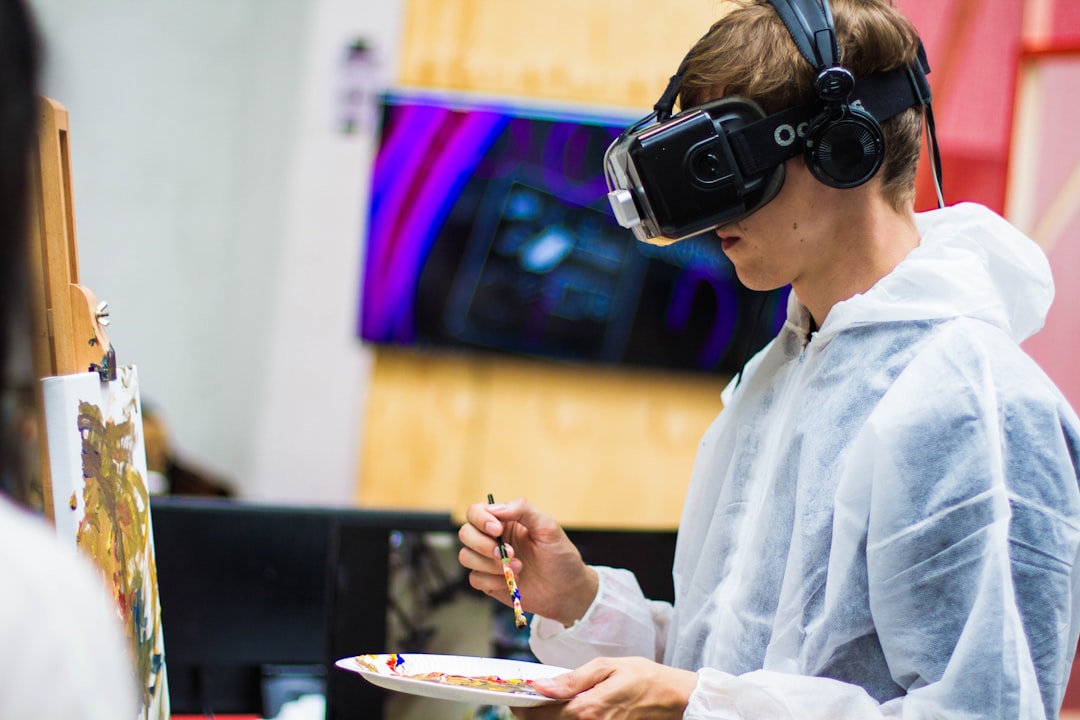The Metaverse Continuum represents a vast and intricate landscape of interconnected virtual environments that blend the physical and digital worlds. At its core, the Metaverse is not merely a single virtual space but rather a spectrum of experiences that range from augmented reality (AR) to fully immersive virtual reality (VR). This continuum allows users to engage with digital content in various ways, whether through simple overlays on the real world or through complete immersion in a computer-generated environment.
The concept is rooted in the idea of creating a shared, persistent digital universe where users can interact with each other and with digital objects in real-time. The mechanics of the Metaverse Continuum involve advanced technologies such as blockchain, artificial intelligence, and cloud computing. These technologies work in tandem to create seamless experiences that are both interactive and engaging.
For instance, blockchain technology enables secure transactions and ownership of digital assets, while AI can personalize user experiences by adapting content based on individual preferences. The integration of these technologies allows for a more cohesive and dynamic interaction within the Metaverse, where users can create, share, and monetize their experiences. As users navigate this continuum, they encounter various platforms and applications that cater to different needs, from social networking to gaming and beyond.
Key Takeaways
- The Metaverse Continuum is a spectrum of virtual realities that range from augmented reality to fully immersive virtual worlds, offering different levels of interaction and immersion.
- Industries such as gaming, education, and healthcare are being transformed by the Metaverse Continuum, creating new opportunities for innovation and growth.
- Privacy and security are major challenges in the Metaverse Continuum, but they also present opportunities for new business models and solutions.
- Virtual reality technology plays a crucial role in shaping the Metaverse Continuum, driving advancements in hardware and software for more immersive experiences.
- Social interactions in virtual realities are key to building communities and relationships, offering new ways for people to connect and collaborate in digital spaces.
The Metaverse Continuum encompasses a wide range of virtual realities, each offering unique experiences and functionalities.
This technology has gained traction in applications such as mobile gaming, where users can interact with virtual characters in their actual surroundings.
For example, Pokémon GO revolutionized mobile gaming by allowing players to catch Pokémon in real-world locations, effectively merging the digital and physical realms. AR’s potential extends beyond entertainment; it is also being utilized in fields like retail, where customers can visualize products in their homes before making a purchase. On the other end of the spectrum lies fully immersive virtual reality (VR), which transports users into entirely digital environments.
VR headsets like the Oculus Rift and HTC Vive provide an unparalleled level of immersion, allowing users to explore fantastical worlds or simulate real-life scenarios. In educational settings, VR can be employed to create interactive learning experiences, such as virtual field trips to historical sites or simulations of scientific phenomena. The ability to engage with content in a three-dimensional space enhances retention and understanding, making VR a powerful tool for educators.
As technology continues to evolve, the lines between AR and VR are becoming increasingly blurred, leading to hybrid experiences that leverage the strengths of both modalities.
The Impact of the Metaverse Continuum on Industries: From Gaming to Education and Beyond

The influence of the Metaverse Continuum extends far beyond gaming; it is reshaping various industries by introducing innovative ways to engage with consumers and enhance operational efficiency. In the gaming sector, the Metaverse has transformed how players interact with games and each other. Multiplayer online games like Fortnite and Roblox have created expansive virtual worlds where players can socialize, compete, and create content collaboratively.
These platforms have not only generated significant revenue through in-game purchases but have also fostered communities that transcend geographical boundaries. Education is another sector experiencing a profound transformation due to the Metaverse Continuum. Traditional classroom settings are being augmented with virtual environments that facilitate experiential learning.
For instance, medical students can practice surgical procedures in VR simulations without any risk to patients. Similarly, language learners can immerse themselves in virtual environments that mimic real-life conversations with native speakers. This shift towards experiential learning is supported by research indicating that active engagement leads to better retention of information.
As educational institutions adopt these technologies, they are not only enhancing learning outcomes but also preparing students for a future where digital literacy is paramount.
Challenges and Opportunities in the Metaverse Continuum: Privacy, Security, and New Business Models
| Challenges and Opportunities | Metrics |
|---|---|
| Privacy Concerns | Percentage of users concerned about data privacy in the metaverse |
| Security Risks | Number of reported security incidents in the metaverse |
| New Business Models | Percentage of companies exploring metaverse-based revenue streams |
While the Metaverse Continuum presents numerous opportunities for innovation and engagement, it also raises significant challenges related to privacy and security. As users navigate these virtual spaces, they generate vast amounts of data that can be exploited if not adequately protected. Concerns about data privacy have become increasingly prominent, particularly as companies collect personal information for targeted advertising or user profiling.
The potential for data breaches poses risks not only to individual users but also to businesses that rely on trust to maintain customer relationships. In response to these challenges, new business models are emerging within the Metaverse Continuum. Companies are exploring decentralized platforms that prioritize user privacy and data ownership through blockchain technology.
This shift towards decentralization empowers users by giving them control over their digital identities and assets. Additionally, businesses are beginning to recognize the potential for virtual goods and services as revenue streams. The sale of non-fungible tokens (NFTs) has gained popularity as a way for creators to monetize their work while providing buyers with verifiable ownership of digital assets.
As these new models take shape, they will likely redefine traditional notions of commerce and consumer engagement.
The Role of Virtual Reality Technology in Shaping the Metaverse Continuum
Virtual reality technology plays a pivotal role in shaping the Metaverse Continuum by providing immersive experiences that engage users on multiple sensory levels. The development of VR hardware has advanced significantly over recent years, with improvements in graphics quality, motion tracking, and user comfort. These advancements have made VR more accessible to a broader audience, allowing for widespread adoption across various sectors.
As VR technology continues to evolve, it is expected to drive innovation within the Metaverse by enabling more realistic simulations and interactions. Moreover, VR technology facilitates social interactions within virtual spaces, allowing users to connect with others in ways that were previously unimaginable.
These interactions foster a sense of community among users who may never meet in person but share common interests or goals. The ability to communicate and collaborate in immersive environments enhances social bonds and creates opportunities for networking and collaboration across diverse fields.
Social Interactions in Virtual Realities: Building Communities and Relationships

The social dynamics within the Metaverse Continuum are complex and multifaceted, reflecting both the potential for community building and the challenges associated with online interactions. Virtual realities provide unique opportunities for individuals to connect with others who share similar interests or backgrounds. Online gaming communities often serve as microcosms of larger societal trends, where players form friendships, collaborate on projects, or engage in competitive play.
These interactions can lead to lasting relationships that extend beyond the virtual realm. However, social interactions in virtual realities also present challenges related to anonymity and behavior regulation. The relative anonymity afforded by avatars can lead some individuals to engage in toxic behavior or harassment without facing immediate consequences.
This phenomenon has prompted discussions about moderation strategies within virtual spaces to ensure safe and inclusive environments for all users. Developers are increasingly implementing tools for reporting misconduct and fostering positive interactions among users. As communities continue to evolve within the Metaverse Continuum, striking a balance between freedom of expression and maintaining respectful interactions will be crucial.
Exploring the Ethical and Moral Implications of the Metaverse Continuum
As the Metaverse Continuum expands, it raises important ethical and moral questions that society must grapple with. One significant concern revolves around issues of representation and inclusivity within virtual spaces. The design of avatars and environments often reflects existing societal biases, which can perpetuate stereotypes or exclude marginalized groups from fully participating in these digital realms.
Ensuring diversity in representation is essential for creating an inclusive Metaverse that reflects the richness of human experience. Another ethical consideration pertains to the impact of virtual experiences on mental health and well-being. While immersive environments can provide therapeutic benefits—such as exposure therapy for phobias—they can also contribute to issues like addiction or escapism if not approached mindfully.
The potential for individuals to become overly reliant on virtual interactions at the expense of real-world relationships raises questions about how society will navigate these challenges moving forward. As stakeholders from various sectors engage with the Metaverse Continuum, establishing ethical guidelines will be vital for fostering responsible development and usage.
The Future of the Metaverse Continuum: Predictions and Possibilities
Looking ahead, the future of the Metaverse Continuum holds immense potential for innovation across various domains. As technology continues to advance, we can expect more sophisticated virtual experiences that blur the lines between reality and digital interaction. The integration of artificial intelligence will likely enhance personalization within virtual spaces, allowing for tailored experiences that adapt to individual preferences and behaviors.
Moreover, as businesses increasingly recognize the value of engaging with consumers in immersive environments, we may see a surge in virtual commerce opportunities. Brands could establish virtual storefronts within popular platforms or create unique experiences that resonate with their target audiences. This shift towards experiential marketing could redefine how companies connect with consumers, emphasizing engagement over traditional advertising methods.
In conclusion, while challenges remain regarding privacy, security, and ethical considerations within the Metaverse Continuum, its potential for transformative impact across industries is undeniable. As we navigate this evolving landscape, collaboration among technologists, policymakers, educators, and users will be essential for shaping a future that harnesses the benefits of this digital frontier while addressing its complexities responsibly.
The concept of the metaverse continuum is intricately linked to the evolving dynamics of community and culture within virtual spaces. For a deeper understanding of how social interactions and cultural expressions are shaped in the metaverse, you can explore the article on community and culture in the metaverse. This piece delves into the social dynamics that influence user experiences and the formation of virtual communities, highlighting the importance of these elements in the broader metaverse continuum.
FAQs
What is the metaverse continuum?
The metaverse continuum refers to the interconnected virtual reality spaces and environments that make up the metaverse. It encompasses a wide range of virtual experiences, from social platforms and gaming environments to virtual workplaces and educational spaces.
How does the metaverse continuum differ from the traditional internet?
The metaverse continuum differs from the traditional internet in that it offers immersive, interactive, and interconnected virtual experiences. Users can navigate and interact with digital environments and other users in real time, blurring the lines between the physical and digital worlds.
What are some examples of the metaverse continuum?
Examples of the metaverse continuum include virtual reality platforms like Oculus, social virtual worlds like Second Life, and online gaming environments like Fortnite and Roblox. Additionally, virtual reality experiences in education, healthcare, and business also contribute to the metaverse continuum.
How is the metaverse continuum being used in different industries?
The metaverse continuum is being used in various industries for purposes such as virtual meetings and collaboration, virtual training and simulations, virtual events and entertainment, and virtual commerce and advertising. It offers new opportunities for businesses and organizations to engage with their audiences in innovative ways.
What are the potential benefits and challenges of the metaverse continuum?
Potential benefits of the metaverse continuum include enhanced collaboration and communication, new opportunities for creativity and expression, and expanded access to virtual experiences. Challenges include issues related to privacy and security, digital inequality, and the potential for addiction and over-reliance on virtual experiences.

Leave a Reply